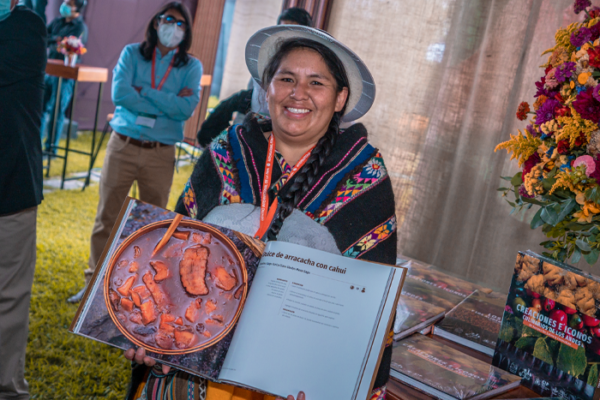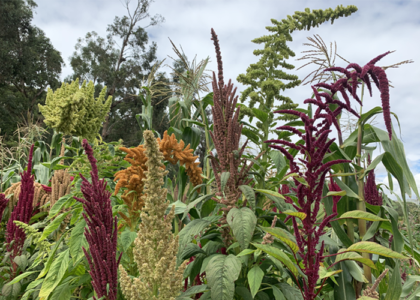One book empowered an entire community.
The quest began as a desire to showcase the vast agrobiodiversity of the Andean region and the environmental value of the extraordinary chain of mountains that rise along the western coast of South America. Our goal was to bring global attention to the importance of this unique center of food domestication that helps ensure planetary food security.

As an international agriculture research center, the natural course of action was to publish a book. The Andes are a Vavilov center of domestication and the center of origin of 80 domesticated crops (e.g., potatoes, amaranth) that collectively represent at least 10,000 distinct varieties and 50 wild species of nutritional importance. Some of these crops – such as quinoa, mauka and berros – we refer to now as future foods. But what the world refers to as future foods are crops have been cultivated here for centuries.
This could not be just any book. It had to be something truly magical, capable of commemorating and celebrating the history, legacy, and culinary traditions that have been sustained by the people of the Andes over millennia.
Thus began the journey to publish a two-volume set of books – one on lesser known 50 Andean future foods and the other filled with mouth-watering cultural recipes from indigenous and Michelin starred chefs, such as Flavio Solorzano (Peru) and Marsia Taha (Bolivia). The Andean Initiative team at the International Potato Center reached out to more than 100 chefs, photographers and scientists from eight countries who responded valiantly to the call to contribute their expert knowledge, pictures and recipes to create a one-of-a-kind testimony to the unequaled biodiversity and cultural heritage of the Andes Mountains.
With few resources and the arrival of COVID (and associated travel bans), what was intended to be done in 12 months dragged out to 24, as the team and contributors worked around illnesses, training local photographers when flights were grounded, and traveling to isolated communities for crop documentation that are challenging to reach during the best of times.
The response was overwhelming. Contributors included Elisabeth Cespedes and Aquilino Alvarez from the Centro de Investigación de Cultivos Andinos who have labored for years without resources to maintain one of the largest global collections of kiwicha, even trekking across the cerro to collect samples during the pandemic. Bolivian contributor, Maria Eugenia Galarreta, has worked assiduously to bring ancestral crops like tarwi or choco back to the dinner table so people can reconnect with the healthy food of their ancestors.
World renowned photographer and naturalist Walter Wust set the standard for capturing images of these treasured Andean roots and vegetables. In the face of the pandemic, he ventured to many remote communities and met with farmers and rural chefs to document their culinary patrimony. His photographs bear witness to his passion for the cultural and social history of the Andes.

The books were finally ready for their debut in sync with the 50th anniversary of the International Potato Center. And as gorgeous and unique as the books are, the real impact only became evident when Clara Mezo Gago, an indigenous leader and chef from the highland province of Yauyos, stood up to say a few words.
In Yauyos, where Quechua is the dominant language, men and women farmers quietly, painstakingly, and without recognition curate and preserve rare species of native crops grown only in the Andes, such as oca, mortiño and pajuro. These crops are more than food to them; they are family heritage. If not for their work as custodians of this rich biodiversity, these species would likely have been lost in time.
At the lectern, Gago, who contributed a recipe to the book, put aside her prepared talking points and spoke from her heart. She said, the impact of this research presented in these books means so much more than we could imagine.
“Thank you for making us visible,” she said.
The global spotlight these books placed on the vital contributions of these unsung stewards to biodiversity, conservation and food security empowered an entire community.
Within every crop, every dish and every recipe, there is a story about dignity and identity that reaches back thousands of years to connect us across the ages in celebration of our shared humanity. In this way, the seeds and recipes of Andean crops have passed through the hands of many, linking children with parents and grandparents in a collective responsibility to each other and to the Earth.
A website for these volumes will be published soon. For more information, please contact Marie Sol Rivadeneira (m.rivadeneira@cgiar.org)
Blog by Ginya Truitt Nakata
